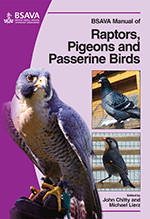
Full text loading...

Raptors, pigeons and passerine birds cover a wide range of body weights from just a few grams in the Canary to >10kg in the Andean Condor. Birds may originate from the wild and from different captive management systems. This chapter covers equipment; perioperative management; common techniques; fractures of the thoracic limb; fractures of the pelvic limb; beak repair techniques; and joint luxation.
Hard tissue surgery, Page 1 of 1
< Previous page | Next page > /docserver/preview/fulltext/10.22233/9781910443101/9781910443101.15-1.gif

Full text loading...






















